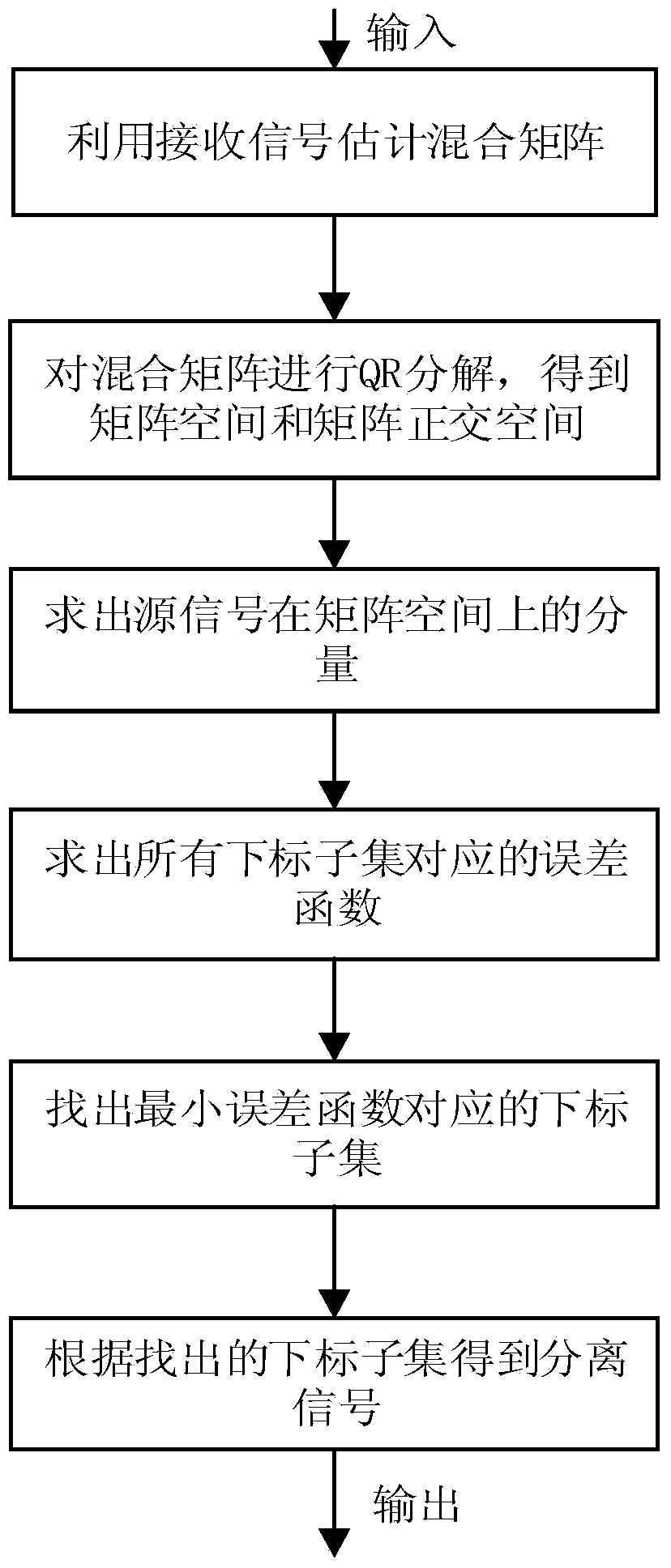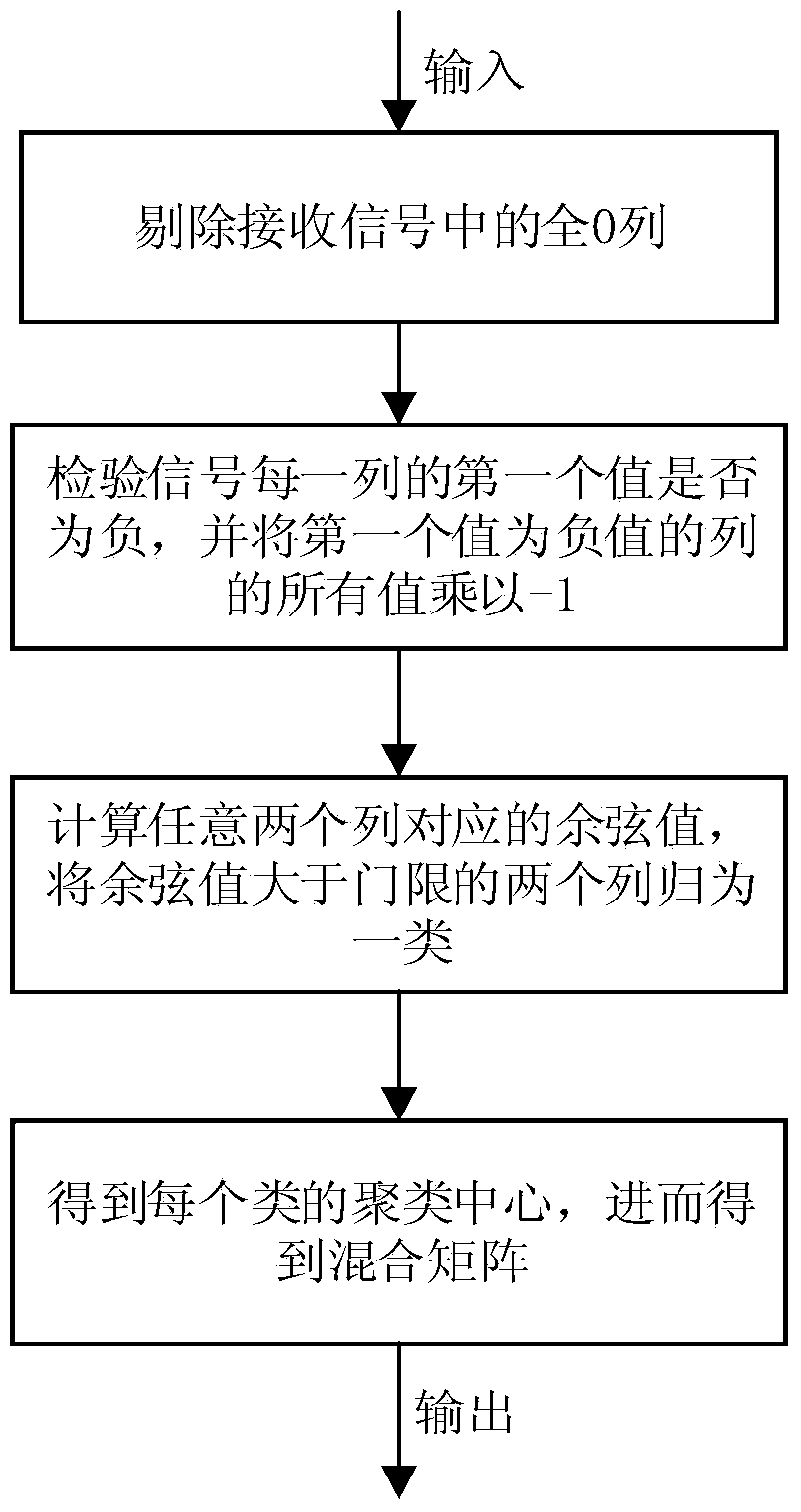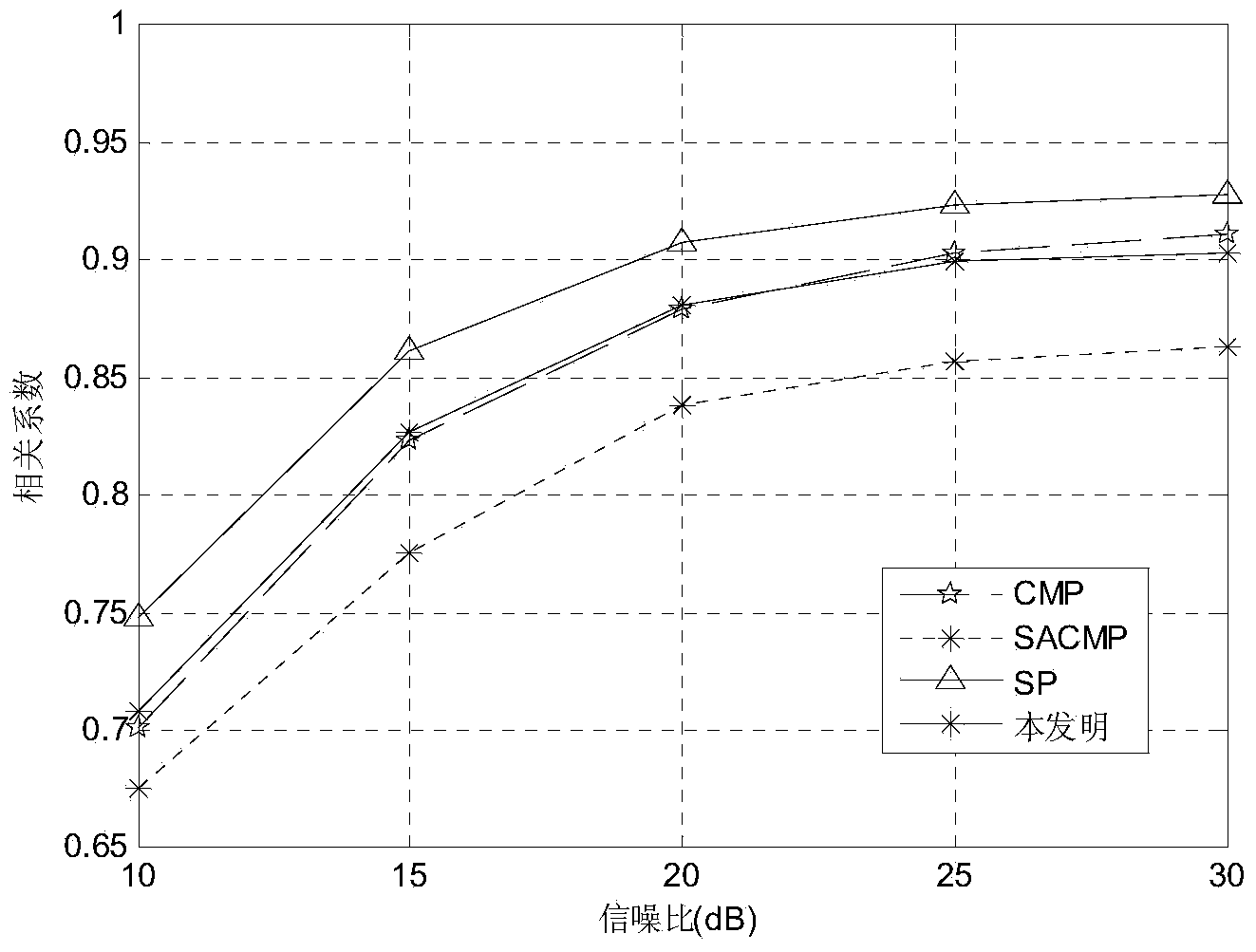Underdetermined blind separation source signal recovery method based on SCMP (Subspace Complementary Matching Pursuit) algorithm
A technology of underdetermined blind separation and recovery method, which is applied in the field of source signal recovery of underdetermined blind separation and source signal recovery in underdetermined blind separation systems, which can solve the problem of high algorithm accuracy, reduced accuracy, and can not be well balanced. and other problems to achieve the effect of reducing complexity, shortening time and improving accuracy
- Summary
- Abstract
- Description
- Claims
- Application Information
AI Technical Summary
Problems solved by technology
Method used
Image
Examples
Embodiment Construction
[0022] The embodiments of the present invention will be described in detail below in conjunction with the drawings and examples. The drawings described here are used to provide a further understanding of the present invention and constitute a part of the application. The schematic embodiments of the present invention and their descriptions are used to explain the present invention. Invention does not constitute a limitation of the present invention.
[0023] refer to figure 1 , the implementation steps of the present invention are as follows:
[0024] Step 1: Receive the mixed signal x(t) to be separated through the sensor, and use the mixing matrix estimation method to estimate the mixing matrix A.
[0025] refer to figure 2 , the specific implementation of this step is as follows:
[0026] (1a) Check whether the value of each column of the received mixed signal X(t) is all 0 values, if yes, remove the column signal, if not, keep the column signal, and obtain the processe...
PUM
 Login to View More
Login to View More Abstract
Description
Claims
Application Information
 Login to View More
Login to View More - R&D
- Intellectual Property
- Life Sciences
- Materials
- Tech Scout
- Unparalleled Data Quality
- Higher Quality Content
- 60% Fewer Hallucinations
Browse by: Latest US Patents, China's latest patents, Technical Efficacy Thesaurus, Application Domain, Technology Topic, Popular Technical Reports.
© 2025 PatSnap. All rights reserved.Legal|Privacy policy|Modern Slavery Act Transparency Statement|Sitemap|About US| Contact US: help@patsnap.com



